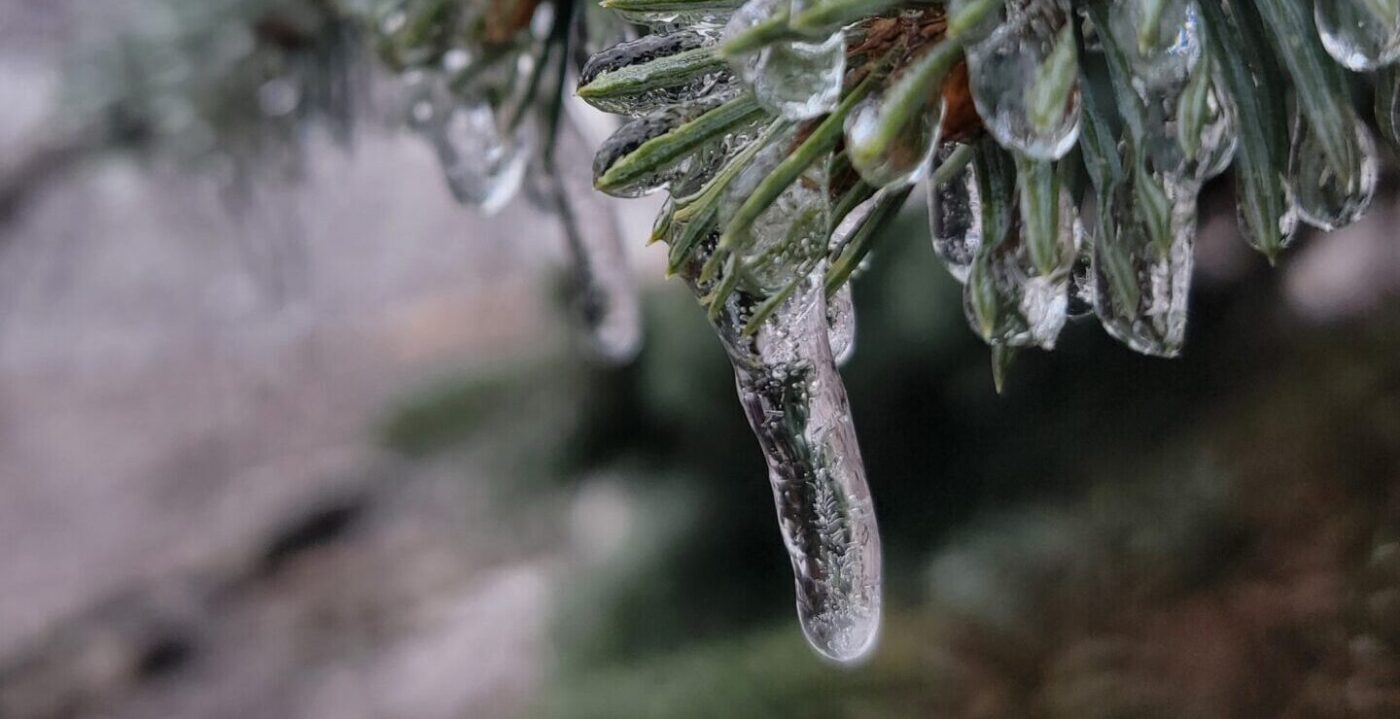In the wake of the intense ice storm our region recently endured, it’s clear that damage is extensive. The last time Canada experienced a similar event was 27 years ago when the 1998 Montreal Ice Storm caused devastation. Many of our communities will never look the same after this year’s storm. Power outages, infrastructure damage, and flooding have wreaked havoc. Luckily, we have municipal, provincial, and private workers that are working hard to restore normalcy. In our forests, wetlands, and other habitats, the damage is widespread and will take longer to return to pre-storm conditions. Many natural areas will also never be the same.
Hundreds of thousands of trees were damaged or destroyed throughout our region during the ice storm. Some species, such as Manitoba, silver, and red maple, aspen, and willow, are more vulnerable than others. As you explore our nature reserves this spring, you will notice holes in canopy cover and broken crown branches in areas with more of these species. Trees with damage or disease prior to the ice storm were also more likely to take damage or fall entirely. Beech with leaf disease and ash trees damaged from past emerald ash borer invasions will have been thinned considerably by the weight of ice and pressure of strong winds we experienced. Other species, like sugar maple, spruce, and hemlock are less likely to have sustained damage beyond minor branches or cone and needle fall. The growth rates and structures of these species protect them. Damage is patchy geographically and varies in intensity from local storm conditions and forest composition.
Nature is more resilient to disturbance than we are. In the light gaps opened up by falling trees or branches, we will see an increase in growth by pioneer species, the first to recolonize after disturbance. Pioneers are most equipped to take advantage of the new light and must sometimes grow before shade tolerant keystone species that define our mature forests. In our region, forest pioneer species include birch, alder, white pine, and red pine as well as a variety of shrubs. Keystone species includes oaks and sugar maples. This successional process will lead to an increase in biodiversity of grasses, shrubs, herbaceous understory plants, and trees throughout our forests over the next several years. Wildlife activity, and perhaps biodiversity, will also increase to use these new patchily distributed resources.
Many of our natural habitats are dependent on disturbance for their long-term health. There are tree species in our western provinces and boreal forests that are dependent on fire for their seeds to germinate or their soil to be rejuvenated with nutrients. In Central Ontario, our wetlands, grasslands, and forests also benefit from natural disturbances. Fallen trees in swamps adds habitat structure for fish, amphibians, and birds. Decomposition increases nutrients available in the soil. Plant diversity increases in forests. While our grasslands do not accumulate much treefall, the flooding we experienced will have moved nutrients throughout those areas that will be used for this year’s growing season.
We also know that disturbance can be devastating. Protection and proper stewardship of land is critical for preventing catastrophe. On our nature reserves, we have begun the process of clearing debris and assessing damage to sensitive areas that are home to Species at risk. Some debris contributes to habitat structure, nesting sites for wildlife, and soil nutrients over time. Too much can be risky for safety, wildfire, or give invasive species a foothold. Be on the lookout for invasive plants and insects in the upcoming months and years. They can outcompete native plants when given the chance. We will need to observe the recovery process and work with nature to ensure the best outcomes.
As we all try to recover from ice storm damage, we are given an opportunity to find ways to work with nature for better human outcomes as well, for our homes, livelihoods, and futures. The science is clear that we will see an increase in frequency and intensity of disturbances over the coming decades as climate change progresses. All industries, not just conservation, understand that losses will be devastating if we cannot find ways to prepare and mitigate. Insurance companies perhaps know this best, and have raised rates or even cut coverage to areas that are most vulnerable to climate change’s wrath.
Fortunately, there are many nature-based solutions to help us absorb the shocks of intense storms, flooding and other disturbances. We can all do our part to plant native trees, shrubs, and grasses. We can learn about the huge array of ecosystem services nature provides us like the absorption of flood waters, filtration of pollutants, wind breaks, contributions to our food web, and many others. Perhaps most importantly, we can insist upon the protection of natural areas that absorb much of the Mother Nature’s shock for us.
A guide to the bolded ecology vocabulary used above:
- Pioneer species- the first species to recolonize an area after disturbance such as flooding or fire. These species often grow easily and have few requirements.
- Keystone species- species that define the mature ecosystem of an area. These species often have specific growing conditions that are not met immediately following disturbance events.
- Herbaceous- plants that do no have any woody stems.
- Succession- the process of natural ecosystem change that begins with the growth and establishment of pioneer species that provide the conditions needed for species that have additional requirements (like shade or soil nutrients) and cannot grow until those conditions occur.
- Biodiversity- the variety of living organisms in an area. Higher biodiversity means more species are present.
Nature based solutions- actions that protect, sustainably manage, and/or restore natural areas that benefit people and nature.


